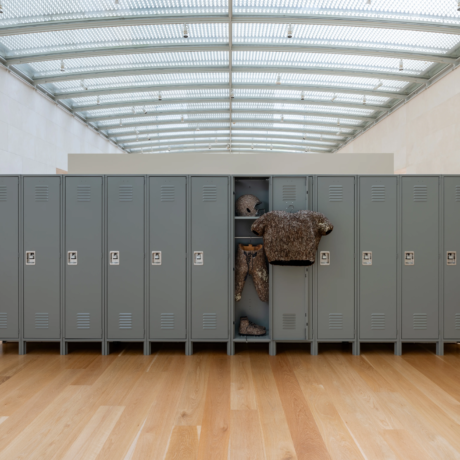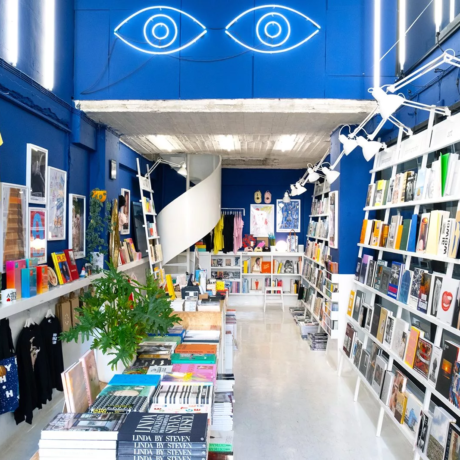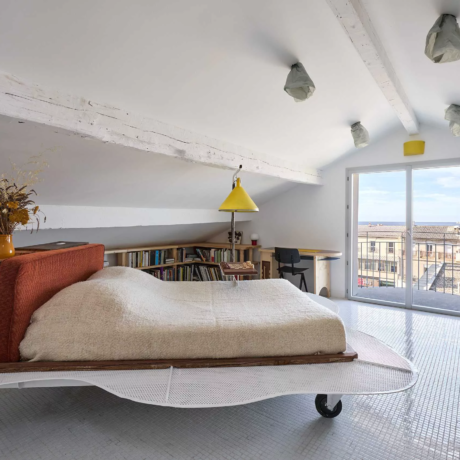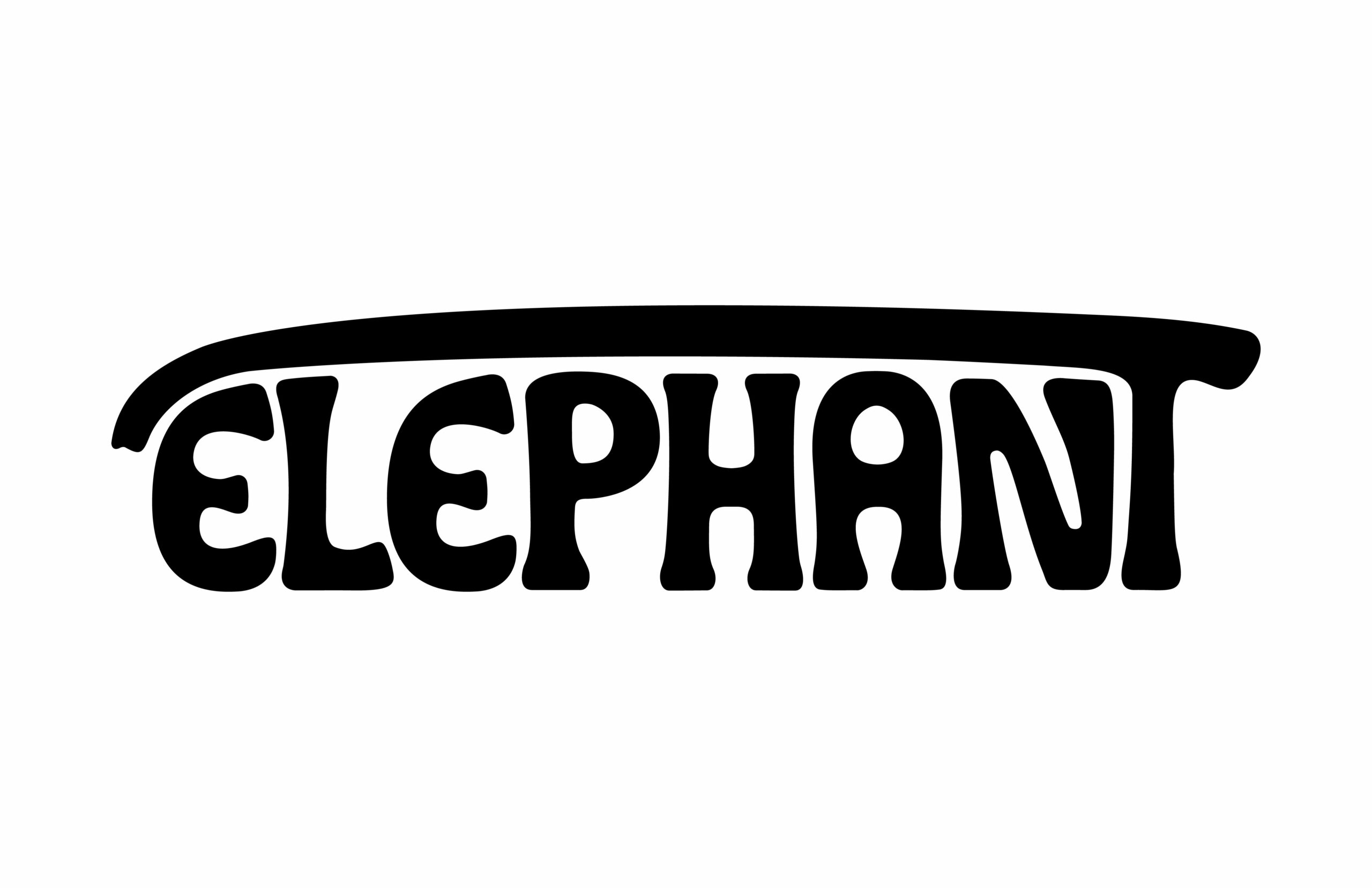Phin Jennings takes on a challenge: can he experience London through the eyes of a tourist for just one day? Relying solely on recommendations from friends in the art world, Phin is guided around Condo London on his bike.
There’s nothing like being a visitor. Unlike home, a new locale rolls out in front of you as a buffet of unfamiliar and tasty morsels: snacks, drinks and experiences to be grabbed with both hands and tucked into with gusto.
On a recent trip abroad, a case of norovirus robbed me of this feeling. As I walked around a European city, devoid of the Bourdain-like joie de vivre that always comes accompanied by a desire to sample whatever coffee, wine, cigarette or snack enters one’s field of vision, I couldn’t help feeling that I had been short-changed. Without this drive for consumption, what is there to live for on holiday? Architecture? Activities? Kill me.
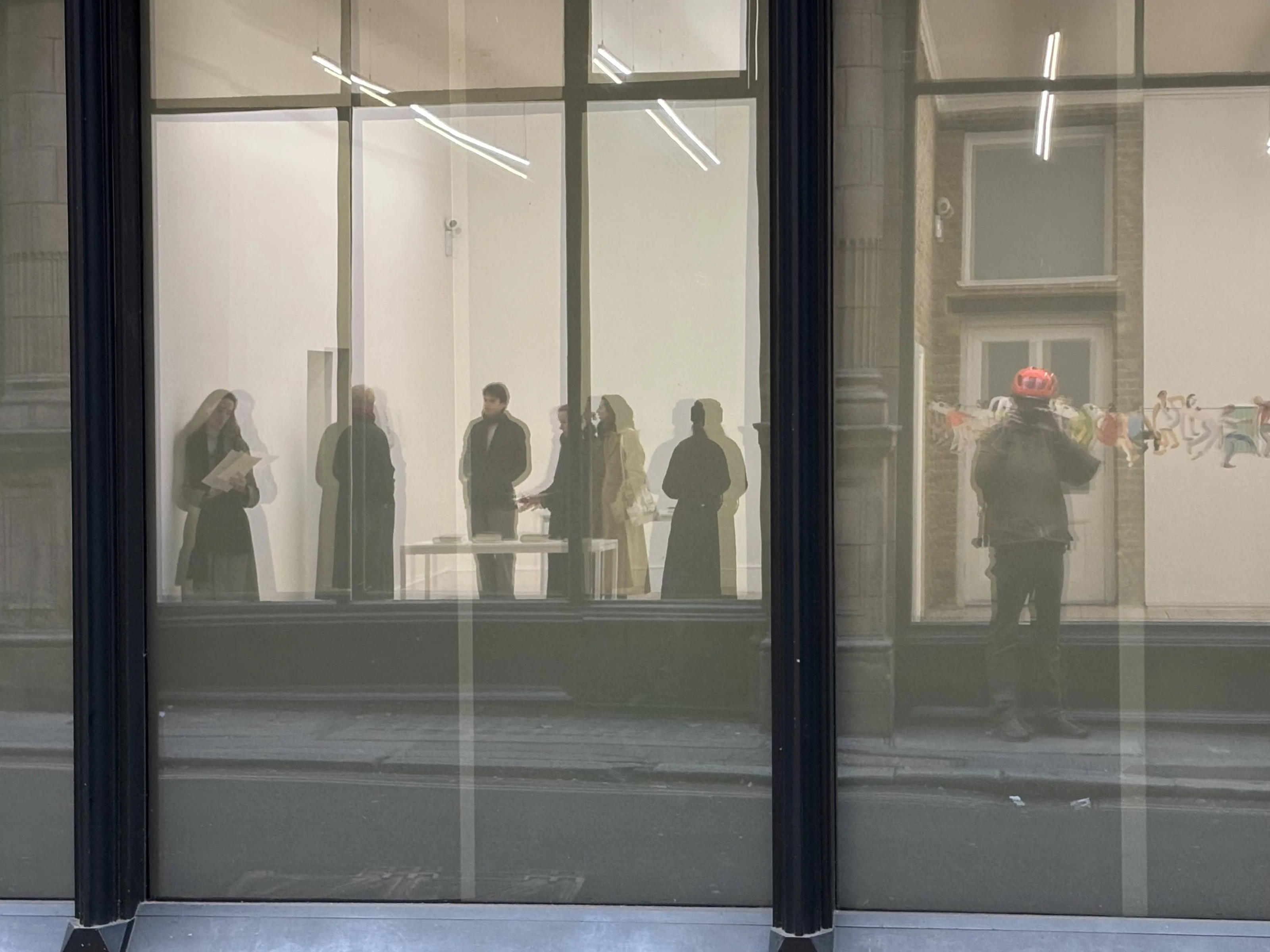
Condo London, organised by Carlos/Ishikawa director Vanessa Carlos, invites international galleries on a trip to my home city. They are hosted by local friends, whose usual exhibition programmes are replaced by exciting and unfamiliar ones. Could this breathe new life into London’s gallery scene?
Here’s hoping. For this year’s Condo, I challenge myself to experience London through the eyes of a tourist. Feigning the wide-eyed naivety of a visitor, I decide not to set my own agenda. Instead I text artist Alex Margo Arden, whose current exhibition at Auto Italia has made her talk of the town, and ask her where I should go. From here, I follow a daisy chain of recommendations from local gallerists to build an itinerary that will — I hope — bring me the wonder of the unfamiliar that I have so badly missed.
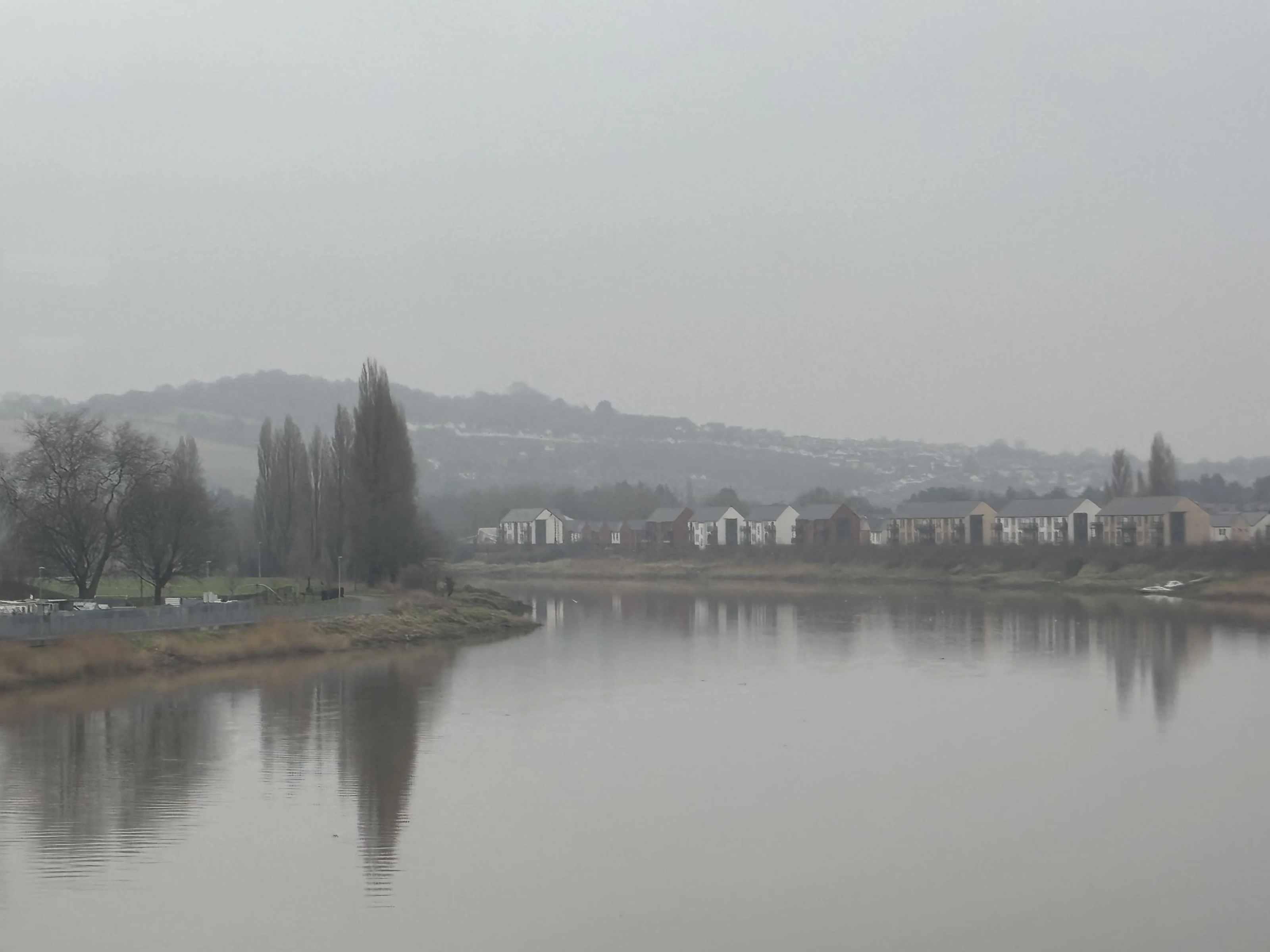
On the Sunday morning of Condo’s opening weekend, I am hurtling on a train towards Paddington from a Welsh hiking trip that I have cut short for my experiment. For a pre-game lunch, I ask a trusted friend where I can get the best Lebanese food on Edgware Road. He sends back a voice note telling me that it’s “a bit like the curry houses on Brick Lane” — a tourist trap. Perfect. He gives me some recommendations but, as I cycle towards one of them from the station, I can’t resist the pull of a shop’s brightly coloured frontage listing its wares: vapes, shisha, property management, money exchange and falafel. I love this city.
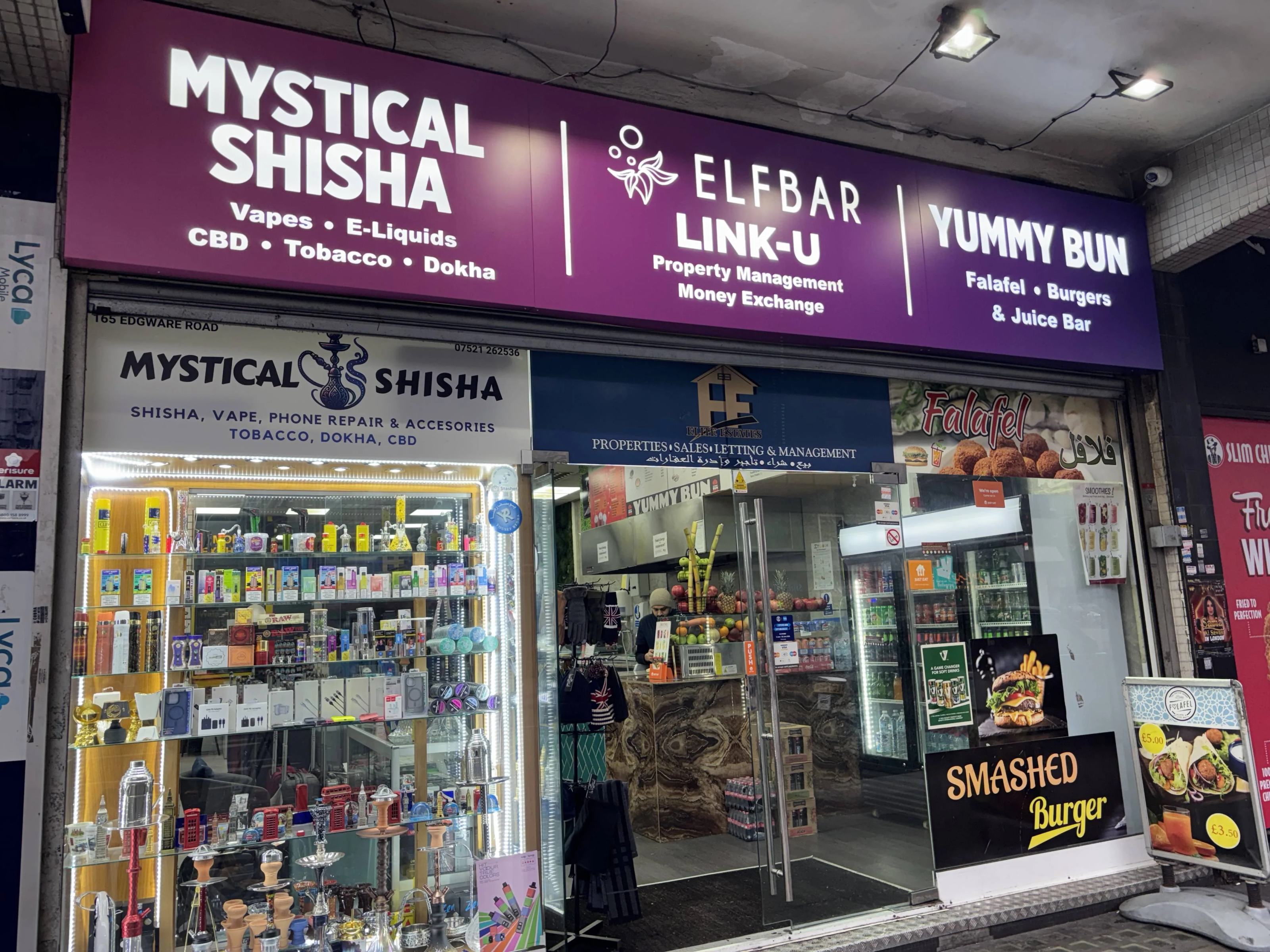
Sated, I head towards Mayfair, where Arden has recommended visiting Arcadia Missa, hosting Florence’s Veda with an exhibition featuring Lewis Hammond and Dominique White. The impact of Hammond’s quietly surreal paintings is only increased by the giddying view of Selfridges. Briefly, I consider buying a candle to mark the occasion. Dominique White’s sculptures and the exhibition text are both beautiful but a bit too nuanced for my jubilant mindset, so I set off for my next gallery: on Arcadia Missa director Rózsa Farkas’ recommendation and just around the corner, Sylvia Kouvali.
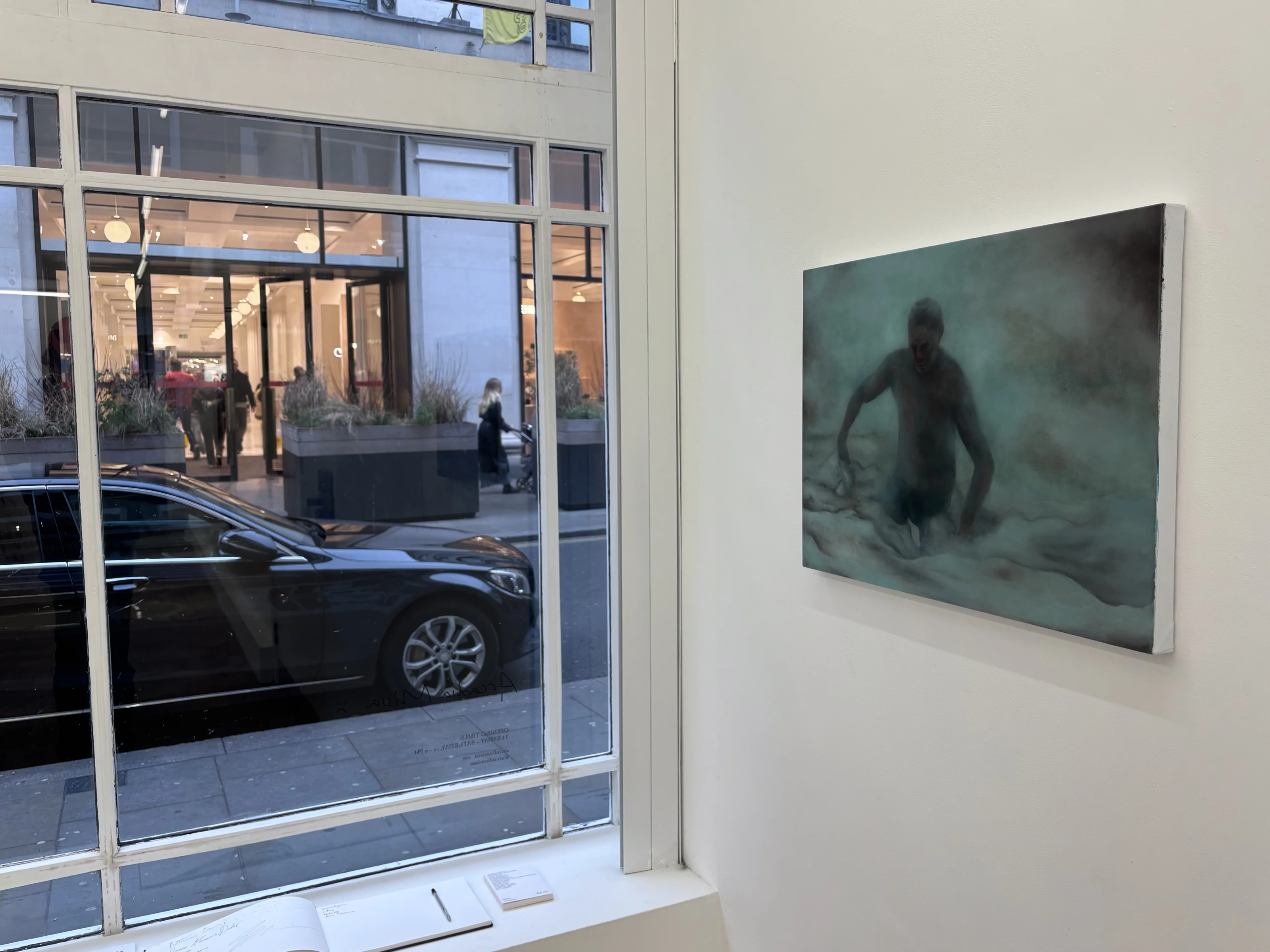
Recently renamed after its founder after 17 years as Rodeo Gallery, Sylvia Kouvali is a warm, tiled alcove located on Bourdon Street, in the shadow of Gagosian’s brightly-lit, white-walled 1,800 square meter behemoth of a gallery. For Condo, Kouvali is showing seven artists represented by Beirut’s Marfa’ Projects. With an emphasis on research-driven work, it’s a physically small show whose ideas unravel far beyond the gallery’s walls. I’m particularly taken by Rania Stephan’s photographs, each taken on different days at the exact time of Egyptian actress Soad Hosni’s suspicious death.
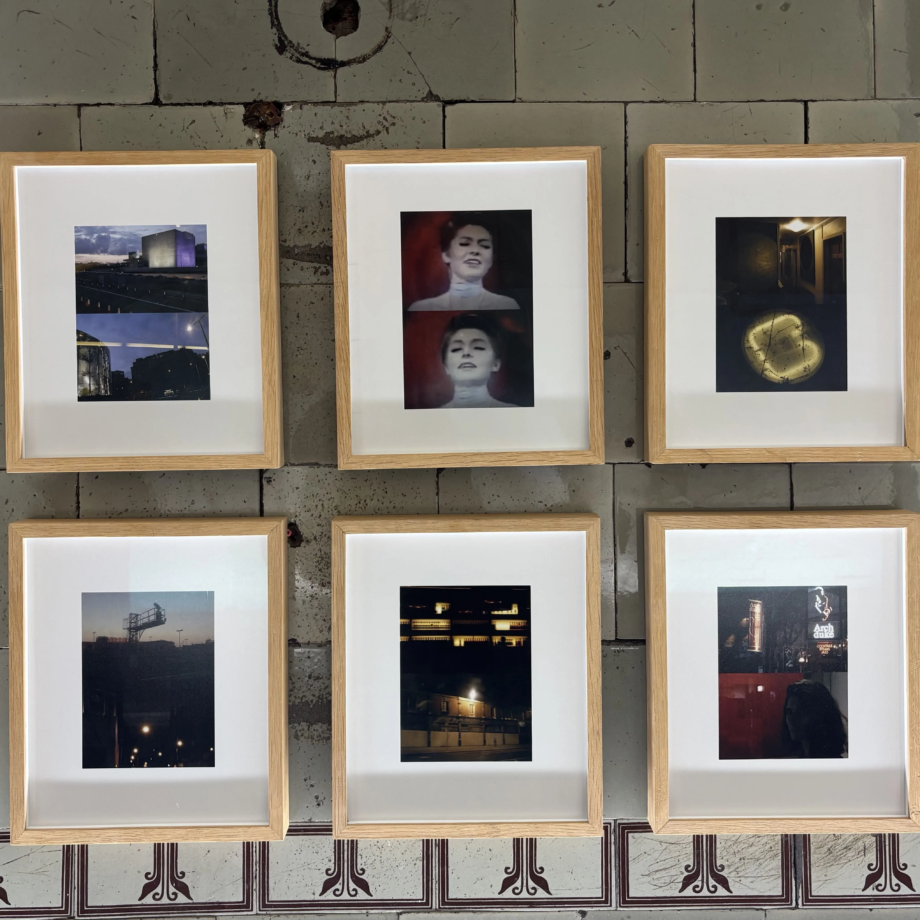
Kouvali recommends some opulent local spots to eat and drink (The Rex Deli for a snack, The Guinea for meat-lovers and Kwãnt for a drink), but something holds me back from visiting them. Maybe I’m just still full of falafel, but I fear I’m stopping myself from partaking because, deep down, I know that they’re quite an indulgence for someone who isn’t really on holiday.
It’s a fear that follows me as I cycle along a grey and chilly Oxford Street. It’s not that I’ve seen everything that London’s West End has to offer; more that it’s all so soaked in routine and familiarity that it’s hard to get much of a kick out of it. On Kouvali’s recommendation, I lock up outside Phillida Reid, an early proponent of the Bloomsbury gallery revival tucked behind Shaftesbury Avenue. Reid is hosting Los Angeles gallery Ehrlich Steinberg, presenting work by TJ Shin and Abbas Zahedi. Comprising eight books and a hand towel unit, it’s the kind of show that I feel would leave a contemporary art cynic smirking — but I quite enjoy it. In fact, I have thought about both artists’ work more than I expected to since I left. I still can’t, and fear that I won’t, come up with a good answer to the question Zahedi asks by way of a public toilet fixture. The Borges story that inspired Shin’s work is one for another day.
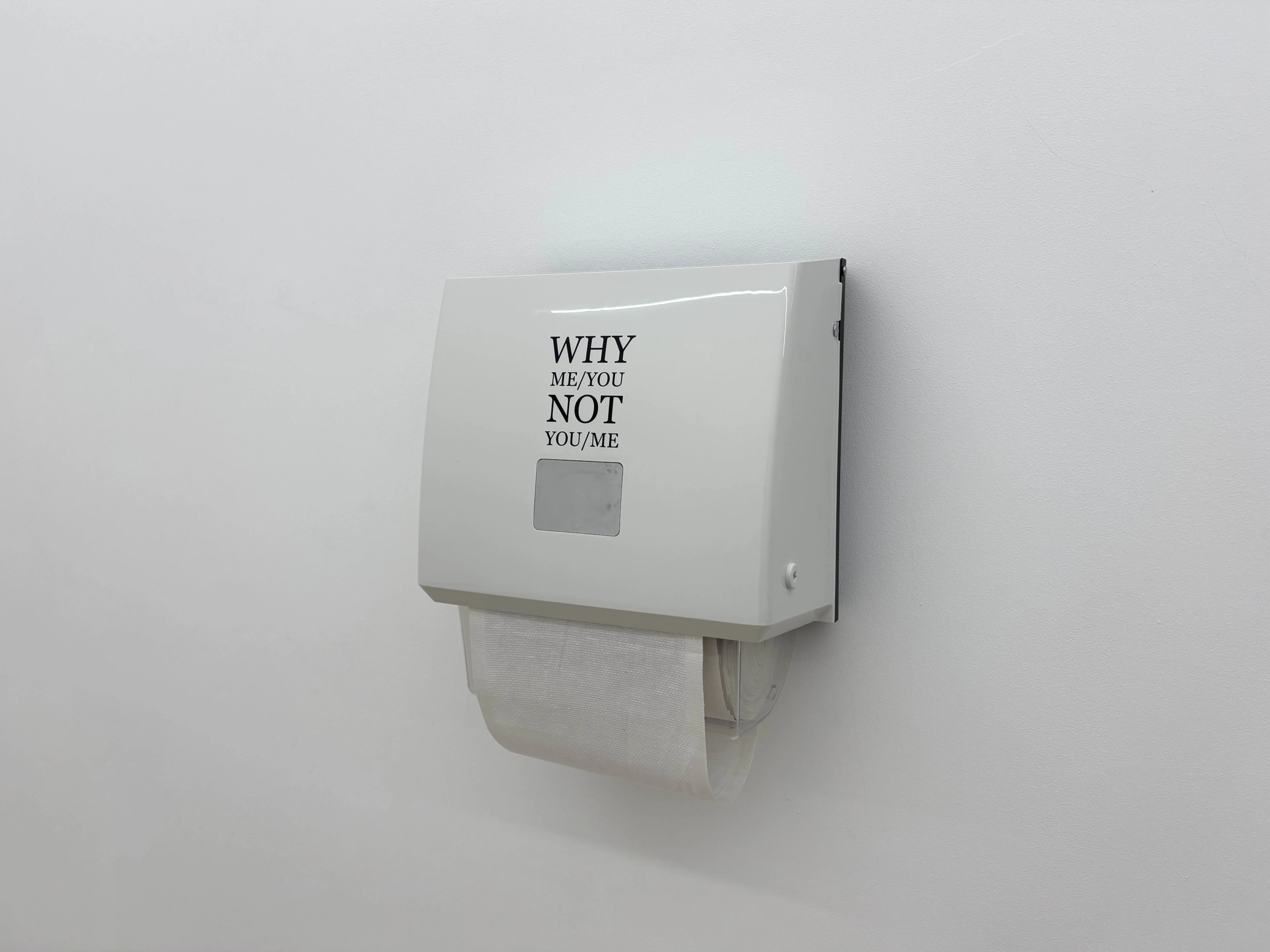
I pedal further eastward towards Brunette Coleman, stopping on my way to buy a Trek bar. I’ve almost given up on my hope to experience London anew, and munching on the familiar oaty panel as I wheel my bicycle along Theobalds Road all but cements this fact. But there are nice things about being at home, too — when I reach the second-floor space, Ted Targett, one of the gallery’s founders and co-directors, greets me warmly. The exhibition that he guides me through, organised with New York gallery Francis Irv, is a sparse arrangement of hardware-heavy assemblages by Zazou Roddam and Rachel Fäth. Roddam’s sculpture Lot 2454/ Lot 5152 (2024–5) is a collection of disembodied crystal door handles stacked inside a perspex box, stuck together only by gravity. It strikes me with its combination of sameness and difference: attached to dull cut-out relics of doors, the handles combine with the laser-cut box to form an assembly that exists on its own crystalline terms.
On my way back downstairs, I notice a brassy knob on the banister. Where I just absent-mindedly held it to swing myself from landing to staircase, it has lost its sheen. I think about the hundreds of bodies that must have done what I just did without thinking, each one contributing to the patina. I think about Roddam’s door handles. I wonder whether this everything-is-connected moment might be the death rattle of my holiday feeling.
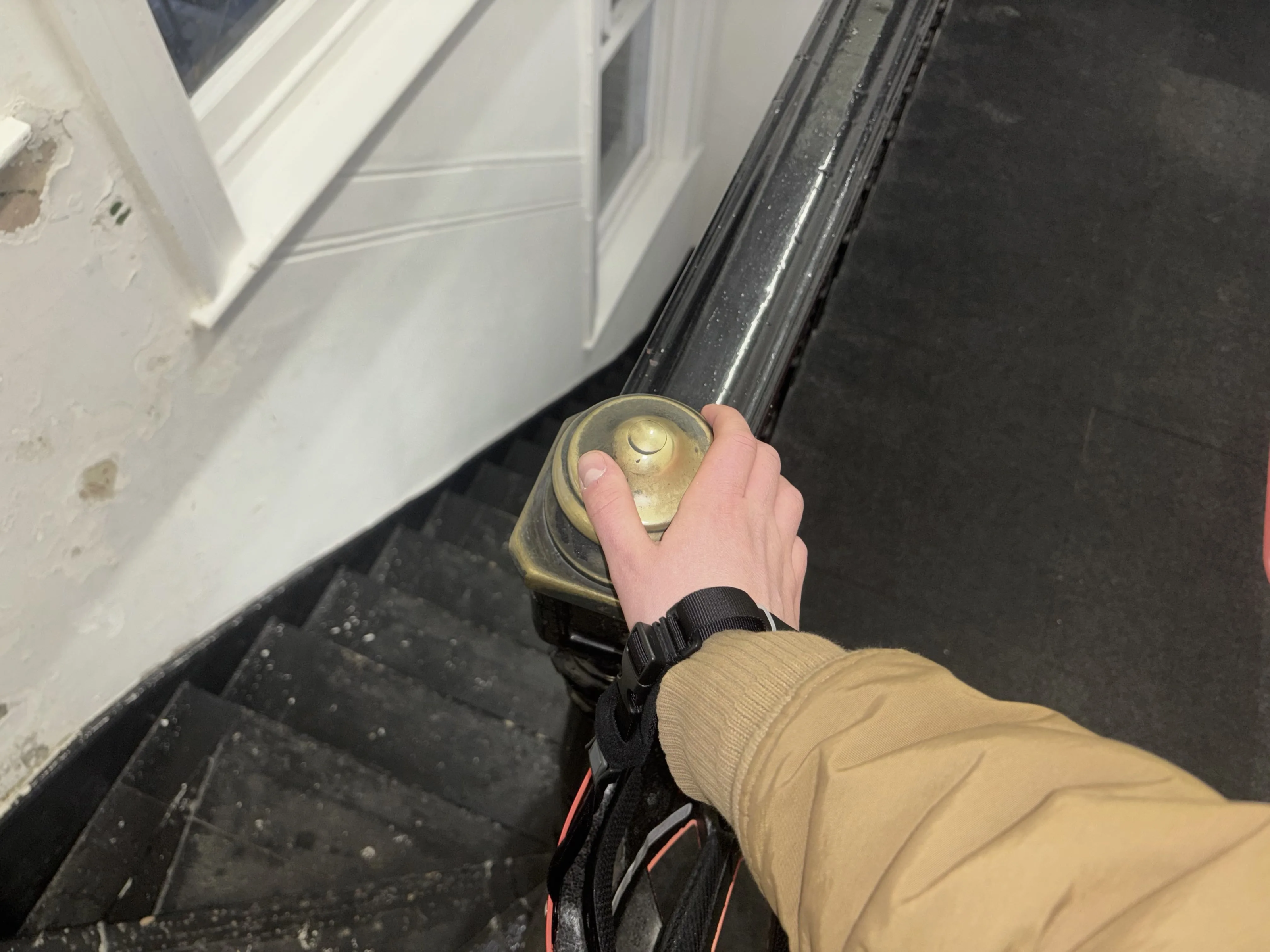
My final gallery, recommended to me by Targett, is East London veteran gallerist Maureen Paley’s intimate second space, Studio M. In collaboration with Air de Paris, she is showing a Wolfgang Tillmans photograph of a smashed up photocopier alongside a suite of Pati Hill’s prints made by photocopying various objects. It’s a perfectly antagonistic combination for the space, set in a converted Victorian school: one artist misusing the hardware whilst the other dismantles it.
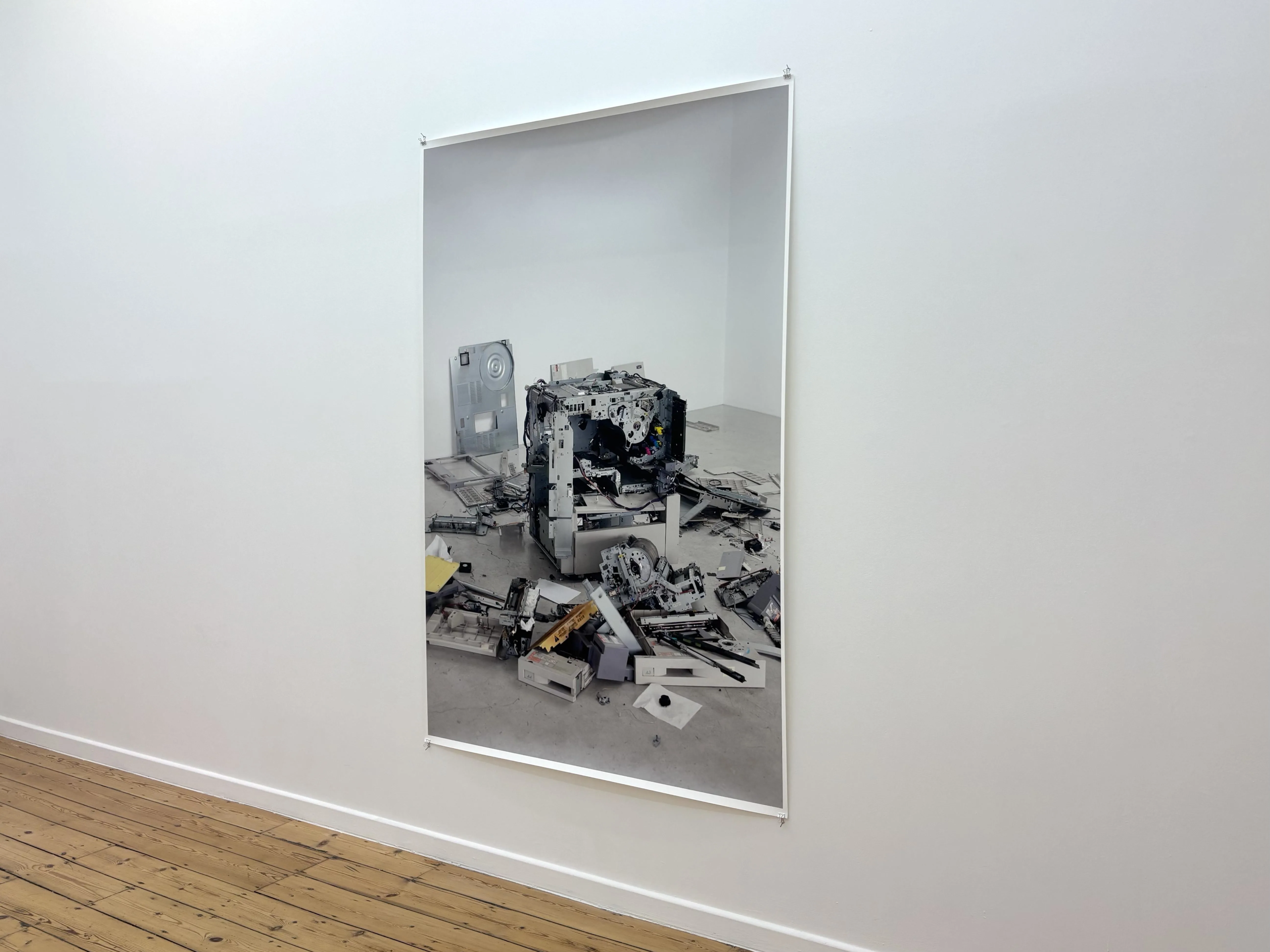
Studio M is located above Rochelle Canteen, the understatedly chic eatery from which I can hear the hum of late Sunday lunch service as I leave. For a second, I consider stopping for a snack and a glass of wine. I could read my book, people watch and fritter away the rest of my afternoon as only a person who knows how to live life well can. I open my phone to an email from eBay: a rug that I have been coveting ends soon. Clearly, this is no time for frittering — I should get home and measure up.

Condo was great — I’d recommend seeing all of the exhibitions mentioned here — but a holiday it was not. Paradoxically, I wonder if I impeded my enjoyment of the afternoon by challenging myself to experience it as one. Sometimes, I think now as I sit at my bedroom desk, feet planted on my new rug, it’s better to travel hopefully than to arrive. And sometimes it’s even better not to travel at all.
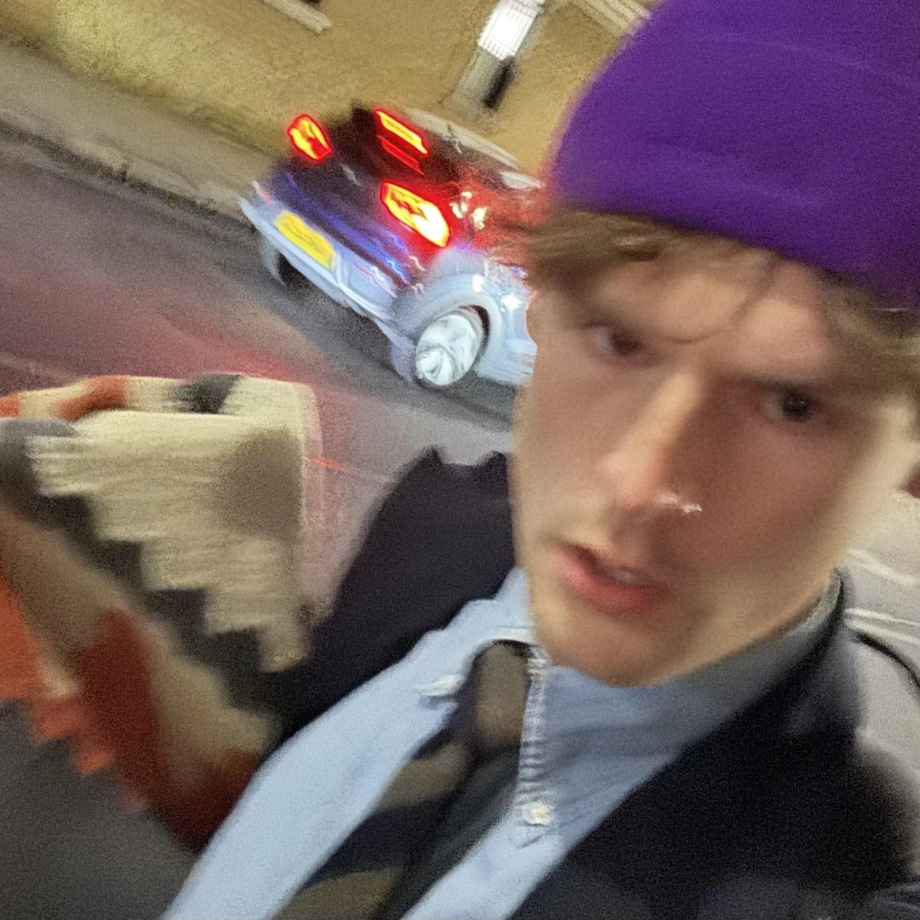
Words & Images by Phin Jennings


